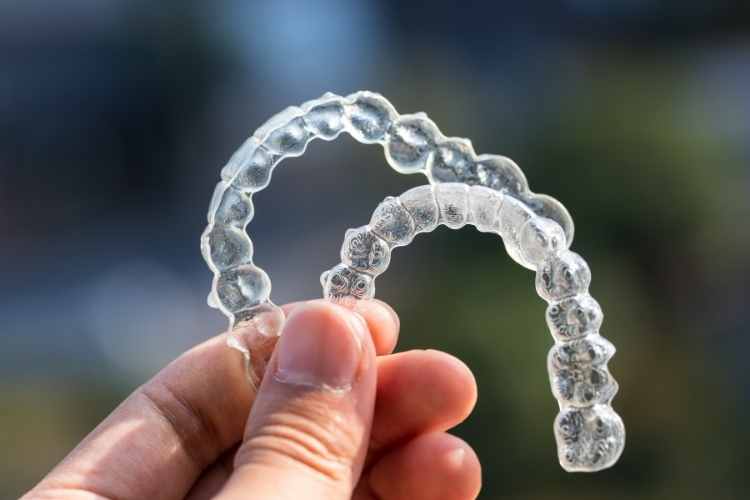Nearly 4 million people in the U.S. have braces.
Whether you’re looking to straighten teeth, reduce tooth sensitivity, or improve the overall health and whiteness of your teeth, braces might seem like a good option.
However, not everyone wants to have permanent metal braces attached to their teeth. Over time, they might be pricey, difficult to keep clean, and even cause discomfort.
Read on to find out more about the differences between braces vs Invisalign and what you need to know to make an informed choice for your teeth and lifestyle.
Invisalign: The Facts
Invisalign clear aligners have been shown to be more effective than traditional braces in terms of both treatment time and results. Invisalign aligners are also more comfortable to wear and less noticeable than braces.
However, the treatment for this can be more expensive than braces, and it is not covered by most dental insurance plans.
It is a clear alternative to metal braces for kids, teens, and adults. Invisalign uses a series of clear, removable aligners to gradually straighten your teeth. Each aligner is custom-made for your teeth and moves them just a little bit at a time.
There are no wires, brackets, or bands to irritate your mouth and cause painful sores. You also won’t have to worry about food getting stuck in your braces. You’ll just brush and floss like normal.
In addition, this treatment is made with 3D computer imaging technology and has been proven effective. In a clinical study, it was shown to be effective in treating overbite, underbite, crowded teeth, and gapped teeth.
Braces: The Facts
Braces are generally only used to correct mild crowding. In terms of results, Invisalign is simply more effective than braces.
And also, braces are the traditional way to straighten teeth, and they’re also effective. But they can be uncomfortable, and they can make eating and cleaning your teeth more difficult. Braces also require regular adjustments, which can be painful.
This treatment uses metal brackets and wires to move your teeth into the correct position. The brackets are bonded to your teeth and the wires are threaded through them. As the wires are tightened, the brackets pull your teeth into the correct position.
How Do They Work?
There are many factors to consider when choosing between Invisalign and braces. Some factors include the severity of the misalignment, the length of time needed to correct the alignment, and the cost.
However, Invisalign may be the better option for people who want to avoid the appearance of metal braces. Invisalign can also be a good option for people who have milder cases of misalignment.
You wear each aligner for about two weeks, then you switch to the next in the series. As you replace each aligner, your teeth will move — little by little, week by week — until they’re straight.
To learn more about this topic, go visit this link: rangewoodorthodontics.com
Invisalign vs Braces: Treatment Time
Invisalign is a clear aligner system that gradually moves your teeth into place. It is virtually invisible, making it a popular choice for adults. Invisalign treatment usually takes about 9-18 months.
Braces, on the other hand, are metal brackets that are attached to your teeth. They are more visible than Invisalign, but they are also more effective at correcting more complex dental problems. Braces treatment usually takes about 12-24 months.
Cost of Invisalign vs Braces
Braces are usually cheaper than Invisalign. Invisalign treatment can cost around $3,500, while the cost of braces can range from $2,500 to $6,000.
The cost of Invisalign treatment may be worth it if you are looking for a more discreet treatment option and are willing to pay more for the Invisalign name. However, if you are more concerned about the cost of treatment, braces may be the better option for you.
Invisalign vs Braces: Which Has Fewer Side Effects?
Braces do have more potential side effects than Invisalign. These side effects can include mouth sores, gum irritation, and headaches.
Invisalign may also cause minor discomfort, but it is not as likely to cause the same side effects as braces.
Braces vs Invisalign: Which is Better?
There is no clear winner when it comes to Invisalign vs Braces. In general, both options can give you the results you want. However, there are some advantages and disadvantages to both options.
There are numerous procedures and treatments one can use to straighten their teeth and stop further problems and both treatments could be the option. It is important to talk to your orthodontist about which treatment is best for you.
But some people no longer even consider their misaligned teeth to be an issue, instead assuming that it is inherent in the way their teeth are built. This is untrue, though. Misalignment of the teeth sometimes referred to as malocclusion of teeth, is a real condition.
When the jaw is closed, malocclusion happens when the teeth are not in alignment. Underbite, overbite, or crooked teeth may be to blame for this.
When it comes to results, both Invisalign and braces can be effective in straightening teeth.
Brace Yourself for Smiles
In general, Invisalign has fewer side effects and is more comfortable than braces.
If you’re considering whether braces vs Invisalign might be right for you, it’s important to talk to your orthodontist to find out which will give you the best results.
However, Invisalign may be a better choice if you’re looking for a more cosmetic solution, while braces may be a better choice if you’re concerned about function over form.
Ultimately, the best option for you depends on the severity of your misalignment and your personal preferences.
Did you find this article helpful? Check out the rest of our blog for more dental related articles like this one!

